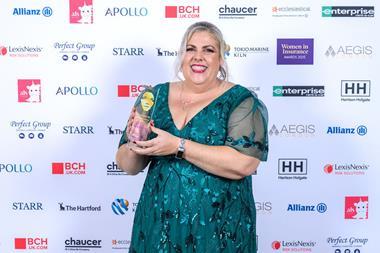Insurance DataLab analyses the latest Solvency and Financial Condition Reports to find out which of the top five largest insurers have the best underwriting performance
Aviva remains the biggest insurer in UK general insurance (UKGI) when it comes to gross written premium (GWP), but it can now also lay claim to being the most profitable of the five biggest players in the market.
Analysis of the most recent set of Solvency and Financial Condition Reports (SFCRs) by market intelligence and research service Insurance DataLab, published exclusively by Insurance Times, has revealed that Aviva reported a combined operating ratio (COR) of 95.9% for 2021.
This represents a 2.1 percentage point improvement on the previous year, when the insurer reported a COR of 98% – the second best ratio behind Direct Line Group (DLG).
Aviva’s underwriting result for 2021 is also its best performance since 2018, when it reported a COR of 93.8% before falling to an underwriting loss in 2019 with a COR of 100.4%.

The insurer’s improvement over the last two years has been underpinned by a falling loss ratio, which stood at 58.1% for 2021 – the second lowest result in this analysis. This is compared to a 66.6% loss ratio in 2019.
Aviva has also reported an impressive expense ratio for last year, with operating expenses falling by more than 4% to £954.9m for 2021 – the lowest of all the insurers in this analysis. This makes Aviva one of just two insurers, alongside Allianz, to report falling expenses over the last 12 months.
This resulted in Aviva reporting an expense ratio of 37.8% in its latest SFCR.
Direct Line Group
While Aviva reported the most profitable UKGI COR for 2021, it was DLG that reported the best loss ratio for the year.
The insurer reported a loss ratio of just 55% for 2021 - although this was still a 2.5 percentage point increase on the 52.5% loss ratio reported for 2020.
This worsening was driven by a 5% increase in net claims incurred to more than £1.6bn. However, this is still lower than the £1.7bn the insurer paid out in claims in 2019.
DLG’s financial results have benefited from a reduction in motor insurance claims in the wake of the Covid-19 pandemic – its motor claims have been down by more than 5% in each of the last two years when compared to 2019.
The insurer reported net motor claims incurred of £1,062.1m in 2021, compared to £912.8m in 2020 and £1,118.5m back in 2019, before the ramifications of the Covid-19 pandemic hit the market.
Despite this claims cost improvement, the insurer’s overall expense ratio has worsened in each of the last three years, climbing from 35.4% in 2018 to 41.4% in 2021.
DLG’s operating expenses rose by almost 12% over that same period too, reaching more than £1.2bn in 2021.
This led to a 3.4 percentage point increase in DLG’s COR to 96.4% for 2021, making it the second most profitable underwriter in this analysis.
This compares to a COR of 93% for 2020, when the insurer was ranked as the most profitable underwriter out of the top five firms included in this analysis.
Axa
Coming in as the third most profitable insurer in this analysis is Axa with a COR of 97.6% - this represents a 1.4 percentage point improvement on the 99% COR the insurer reported for 2020.
Axa’s latest COR also marks the insurer’s best underwriting performance since 2018, when it reported a COR of 97.5%.
This improvement over the last two years was driven by a reduction in the insurer’s loss ratio, which fell to 62.1% for 2021, down from 63.5% in 2020 and 66.8% in 2019.
Axa’s largest business in the UK is Axa Insurance UK. This division reported GWP of £2.2bn for 2021, accounting for just over half of the total business underwritten in the UK by the Axa Group.
Mirroring the aggregated group figures, Axa Insurance UK also reported an improving loss ratio over each of the last two years, with the insurer’s loss ratio falling to 60.2% for 2021 - down from 61.4% in 2020 and 65.1% in 2019.
Meanwhile, Axa PPP Healthcare accounted for around 31% of Axa’s UK business underwritten last year.
In contrast to the rest of the group’s UK businesses, the health insurer’s loss ratio has been increasing. Axa PPP Healthcare reported a loss ratio of 67.9% for 2021, up from 64% in 2020 and 67.3% in 2019.
The SFCR for XL Catlin UK, now known as global commercial insurance and reinsurance business Axa XL, revealed a dramatically improved loss ratio for 2021 - this fell to 41.3% last year, down from 84.4% for 2020 and a breakeven 100% for 2019.
With 2021 GWP of £771m, Axa XL accounted for less than 18% of Axa’s overall UK-based business.
While the insurer’s aggregate loss ratio has improved over the last 12 months, its expense ratio has remained steady at 35.5% for both 2021 and 2020.
This is, however, 3.4 percentage points worse than the 32.1% expense ratio the firm reported for 2019.

The lowest expense ratio for the Axa Group in the UK was reported by Axa PPP Healthcare, with an expense ratio of just 25.2% for 2021.
Axa Insurance UK, meanwhile, reported a 2021 expense ratio of 39.9%, while Axa XL reported an expense ratio of 64.6%.
Allianz
The third most profitable insurer in this ranking is Allianz, with an aggregate COR of 98.3% for 2021. This marks a 2.5 percentage point improvement on the loss-making 100.8% COR the insurer reported for 2020.
This improvement was primarily driven by the group’s commercial arm in the UK, Allianz Insurance, which reported an 8.6 percentage point improvement in its COR to 94.6% for 2021. This showcased a return to profitable territory after the insurer reported a COR of 103.3% for the previous year.
Fairmead Insurance, formerly known as Legal and General Insurance, was the other division of the Allianz Group in the UK to report an improved COR - although the fact that it accounted for just 8% of the group’s overall UK GWP in 2021 means that the impact of this improvement was diluted at an aggregate level.
Fairmead Insurance reported a COR of 108.8% for 2021. While this was still firmly in loss-making territory, it represents a 28.2 percentage point improvement on the 137% COR the insurer reported for the previous year, fuelled by a 31% drop in net incurred claims to £57.4m.
Allianz’s other insurance arms in the UK, Liverpool Victoria and Highway Insurance, both reported worsening CORs over the last 12 months.
Highway reported a COR of 115.5% for 2021, up from 109.9% the previous year, while Liverpool Victoria – which is Allianz’s second largest insurance business in the UK with GWP of £1.2bn –reported a 2021 COR of 96.1%, up from 89.7% in 2020.
At an aggregate level, Allianz’s improving COR in 2021 was driven by a 2.5 percentage point reduction in its loss ratio to 63.5%, while the insurer’s expense ratio remained steady at 34.8%.
RSA
Rounding off this analysis is RSA, which reported a COR of 108.2% last year – this makes it the only insurer to report an underwriting loss for 2021.
Indeed, the insurer has reported a loss-making COR in each of the last five years.
Read: Insurance DataLab names 2021’s best insurer in UKGI
Read: Gibraltar on the rise as underwriting performance improves on the Rock
RSA’s poor performance is evidenced by the fact that it has reported the highest loss ratio for 2021 out of the insurers analysed (65%), as well as the highest expense ratio (43.3%).
While the insurer’s loss ratio has worsened over the last 12 months – rising by some eight percentage points – its expense ratio has improved by 3.2 percentage points, with a marginal uptick in operating expenses offset by a 7.6% increase in net earned premium.
RSA’s three biggest business lines are property insurance, which accounted for approximately 45% of its total GWP in 2021, motor insurance (26% of GWP) and general liability (13% of GWP) - however all three lines reporting an underwriting loss last year.
The worst performing of these three lines was property insurance, with a COR of 111.7% for 2021 (2020: 106.9%). The best performing was motor insurance, which reported a 2021 COR of 108.7%, compared to 100.5% in 2020.
Hosted by comedian and actor Tom Allen, 34 Gold, 23 Silver and 22 Bronze awards were handed out across an amazing 34 categories recognising brilliance and innovation right across the breadth of UK general insurance.























































No comments yet